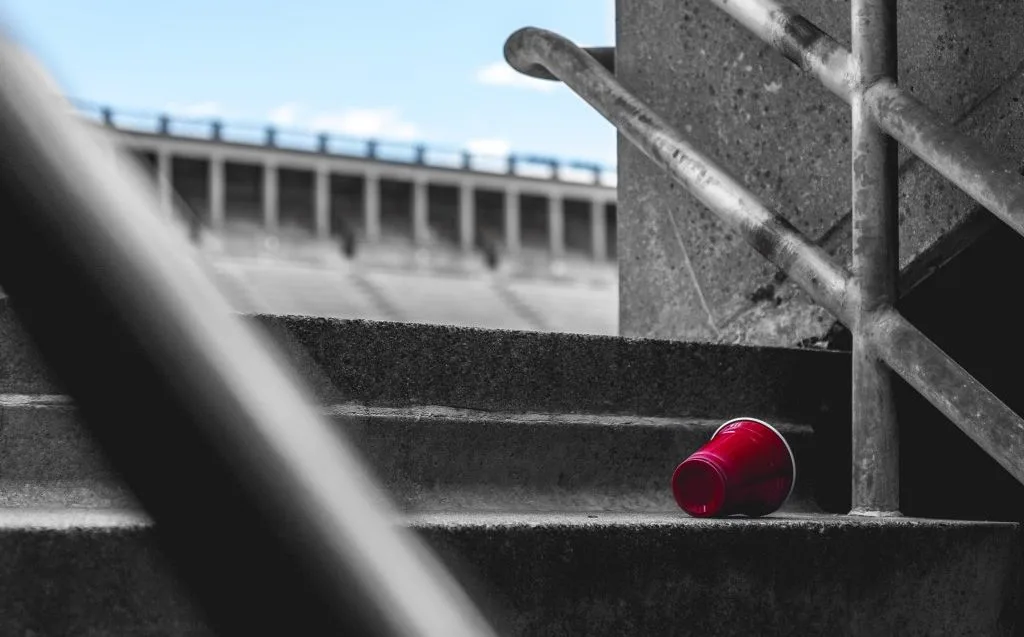Topics
- Article
The Four-Day Hangover: How Alcohol Affects Recovery

While we hate to be the bearers of bad news, in a data analysis conducted by WHOOP, the effects of alcohol were shown to last as long as four days in some collegiate athletes.
Most athletes know better than to go out drinking the night before competition, but many wouldn’t think twice before knocking back some casual beers three days out. After all, come game time, BACs are long since back to zero and the typical hangover is a distant, albeit unpleasant, memory – evidence that the effects of drinking alcohol are behind us, right? While we hate to be the bearers of bad news, in a data analysis conducted by WHOOP, the effects of alcohol were shown to last as long as four days in some collegiate athletes.
Student-Athlete Alcohol Data Analysis
Our analysis used 148 student-athletes during the 2015-2016 athletic and academic year. These athletes represented 11 teams across 6 sports. While athletes were never instructed to drink, many chose to do so and volunteered this information the following morning in the WHOOP journal. While they slept off their debaucherous nights, WHOOP monitored their heart rate and heart rate variability (HRV). Not surprisingly, when compared to their non-drinking teammates, these key performance stats were far less impressive in the drinkers. Specifically, resting heart rates were 16.2% higher and HRVs were 22.7% lower – a change of similar magnitude to that of aging 12 years. These results were not all that surprising, alcohol consumption has been repeatedly shown to tank athletic performance in studies measuring performance through endurance, strength, and fine motor skill assessments. Interestingly, all these studies looked at acute effects, meaning performance was assessed within 24 hours of the alcohol consumption, and none reported on the duration of these effects. That’s what makes the analysis conducted by WHOOP unique; because it's worn 24/7, our subjects not only had resting heart rate and HRV data on the night following their drinking, but also on the five nights after that. Furthermore, WHOOP collected workout performance data on all workouts logged by these athletes following each drinking event. They were therefore able to answer, for the first time, the question: How long after you stop drinking is performance impaired?
Measuring the Effects of Alcohol
At this point, it is worth pointing out that the WHOOP analysis was done using preexisting data, and was not anticipated at the time of collection. Therefore, it was not possible to collect information on what, how much, or over what time period the participants drank. This means we are very likely lumping together athletes who had two beers or a glass of wine at dinner (while also drinking water and eating food) with athletes binge-drinking at a party. This is expected to explain some of variability in the duration of the effect on performance, but individual differences in physiology are also likely playing a significant role. That said, here’s what we saw – the effects of alcohol were measured in two ways. The first was through objective recovery metrics – namely, resting heart rate and heart rate variability relative to each athlete’s season average. Measured this way, athletes exhibited sustained effects for anywhere from one to five days, with drop off as follows:

Athletes showed reduced recovery metrics for up to 4-5 days post alcohol consumption.
The second measurement of alcohol’s sustained effects was a subjective assessment. Through the WHOOP mobile app, athletes are surveyed on their perceived performance of each workout using a simple five-point scale. On average, athletes rate their performance at 3.3. On the first three days after a night of drinking, the average workout was self-rated significantly below this average level.
WHOOP Helps You Understand How Alcohol Affects Recovery
Together, the patterns in the subjective and objective measurements of post-alcohol recovery and athletic performance are the first to illustrate alcohol’s multi-day effects. While likely not what we wanted to hear, our results suggest that athletes may want to think twice before drinking the Wednesday before a Saturday game. In an interview with Amanda Sobhy, the world No. 6 ranked female squash player and WHOOP user who was not a part of the study, Sobhy expressed being shocked to see how significant the impact of alcohol was on her own squash performance, telling us “I now limit myself a lot now. I used to drink before WHOOP and thought that it was just fine! Now I see the numbers and I’m like ‘Gosh, it’s destroying my life!’ My HRV is so low and my [resting heart rate] is so high, and I’m like HOLY MOLEY.” This is the power of the continuous monitoring technology WHOOP provides; it allows athletes at the individual and team levels to start to understand the relationships between their behaviors and their performance.